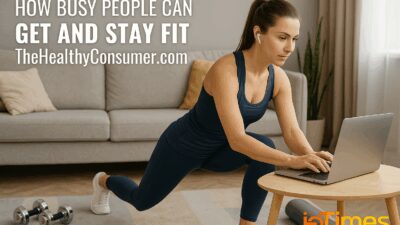When the coronavirus pandemic swept across the globe in early 2020, few industries were left untouched. Residential real estate, traditionally reliant on in-person interactions, open houses, and community gatherings, faced unprecedented challenges. Amid the chaos, Brookfield Residential, a leading land developer and homebuilder in North America, quickly emerged as a case study in resilience, innovation, and community responsibility.
This comprehensive article explores the impact of the coronavirus on Brookfield Residential’s operations, how the company responded, what it meant for homebuyers and communities, and the long-term lessons shaping the future of real estate development.
Whether you’re a potential homebuyer, investor, industry professional, or simply curious about how a real estate giant like Brookfield Residential adapted to COVID-19, this deep dive has you covered.
Who Is Brookfield Residential?
Brookfield Residential is a North American real estate developer and homebuilder headquartered in Calgary, Alberta. A subsidiary of Brookfield Properties and part of the Brookfield Asset Management group, the company operates across the U.S. and Canada, with developments in California, Texas, Arizona, Colorado, and beyond.
Known for its master-planned communities, sustainable construction practices, and customer-first approach, Brookfield Residential has long emphasized innovation. When COVID-19 disrupted business as usual, the company was better positioned than most to pivot quickly and effectively.
The Onset of the Pandemic: Disruption and Uncertainty
Immediate Challenges from COVID-19
The early days of the coronavirus pandemic brought a cascade of challenges:
-
Construction site closures and labor shortages
-
Material supply chain disruptions
-
Suspension of in-person showings and open houses
-
Economic uncertainty impacting homebuyer confidence
For a business like Brookfield Residential, where the product is physical, high-value, and personal, these disruptions were seismic.
Customer Confidence and Sales Activity
In Q2 2020, the real estate market saw a temporary freeze as buyers retreated. Open houses were canceled, offices shuttered, and questions loomed: How do you sell homes when you can’t meet buyers in person? How do you build them without workers or materials?
Brookfield Residential had to act fast — and they did.
The Brookfield Residential Coronavirus Response Strategy
1. Health and Safety Comes First
From the very beginning, Brookfield Residential placed a strong emphasis on health and safety protocols. These included:
-
PPE requirements on all construction sites
-
Daily temperature checks and contact tracing
-
Enhanced sanitization in offices and model homes
-
Virtual team meetings and remote work flexibility
These measures helped keep employees, tradespeople, and customers safe while minimizing operational downtime.
2. Embracing a Digital Transformation
The company rapidly rolled out digital tools to ensure sales didn’t grind to a halt:
-
Virtual home tours using 3D modeling and panoramic photography
-
Interactive floorplans and design customization online
-
Zoom consultations with sales and mortgage teams
-
Remote document signing and online closings
These digital solutions, born out of necessity, proved so effective that many have become standard offerings even post-pandemic.
Shifting Market Preferences During the Coronavirus
The Brookfield Residential coronavirus experience revealed emerging buyer trends, as Americans rethought what “home” meant.
1. Demand for Space and Flexibility
With remote work becoming the norm, buyers sought:
-
Larger homes with dedicated office spaces
-
Multi-functional layouts for work, school, and leisure
-
Private outdoor spaces like backyards and balconies
Brookfield responded by redesigning floorplans and introducing flex rooms, dens, and backyard features into its developments.
2. Emphasis on Health and Sustainability
The pandemic intensified awareness of indoor air quality and overall health. Brookfield began offering:
-
Smart home tech for touchless entry and climate control
-
Improved ventilation systems and HEPA filtration
-
Energy-efficient appliances and eco-friendly building materials
These features resonated with a new wave of wellness-focused buyers.
Supporting Buyers, Employees, and Communities
Flexible Financing and Buyer Assistance
Recognizing that job losses and economic anxiety were widespread, Brookfield introduced:
-
Deferred payment programs
-
Closing cost assistance
-
Custom financing plans for impacted buyers
These offerings helped maintain access to homeownership during a financially volatile period.
Employee Care and Internal Support
Internally, the company adapted by:
-
Transitioning most non-site employees to remote work
-
Providing mental health resources and flexible schedules
-
Offering job security assurances where possible
Brookfield’s proactive communication fostered a sense of stability during a turbulent time.
Giving Back to Local Communities
Brookfield Residential partnered with local nonprofits to provide:
-
Food donations and PPE to frontline workers
-
Online education tools for families and schools
-
Emergency support funds in high-need communities
Operational Challenges and Supply Chain Resilience
Supply Chain Disruptions
Like many in the construction industry, Brookfield faced shortages in:
-
Lumber and steel
-
HVAC and plumbing equipment
-
Windows, doors, and appliances
They mitigated these issues by:
-
Securing alternative suppliers
-
Adjusting construction timelines
-
Prefabricating components off-site when possible
Maintaining Project Momentum
Despite the odds, many Brookfield developments stayed on track. By adapting schedules, coordinating remotely with subcontractors, and using cloud-based project management tools, they minimized slowdowns.
Long-Term Impacts: The Post-Coronavirus Brookfield Residential Strategy
Permanent Digital Offerings
What began as a crisis response became a strategic advantage:
-
Virtual sales platforms are now a permanent feature
-
Homebuyers can design, tour, and finance homes entirely online
-
Hybrid service models (digital + in-person) offer ultimate flexibility
Building for Resilience
New projects increasingly incorporate:
-
Home offices and learning nooks
-
Expanded outdoor amenities like walking trails and parks
-
Community wellness designs (e.g., bike paths, air purification systems in communal areas)
Brookfield continues to refine its communities to support post-pandemic lifestyles.
Lessons Learned: Key Takeaways from Brookfield Residential’s Coronavirus Experience
-
Adaptability is essential. Companies that pivoted fast — like Brookfield — stayed competitive.
-
Technology enhances, not replaces, the human element. Virtual tools succeeded because they were built around real customer needs.
-
Community matters. In times of crisis, strong community ties build loyalty and trust.
-
Health is the new luxury. Buyers now prioritize health features as much as square footage or location.
Frequently Asked Questions (FAQ)
What safety measures did Brookfield Residential take during the coronavirus?
Brookfield implemented PPE protocols, regular sanitization, contact tracing, and remote work policies to protect both employees and customers.
Can I buy a home from Brookfield Residential entirely online?
Yes. The company offers virtual tours, digital consultations, and remote document signing, allowing buyers to purchase homes without visiting in person.
How did COVID-19 impact Brookfield’s home designs?
Home designs now include flexible spaces for remote work, wellness-oriented features like air purification, and more outdoor space.
Read Also: Your Topics | Multiple Stories: A Guide to Content Creation
Conclusion
The Brookfield Residential coronavirus response exemplifies how proactive planning, customer empathy, and technological innovation can turn crisis into opportunity. From launching digital homebuying platforms to rethinking what modern homes should offer, Brookfield didn’t just survive the pandemic — it evolved.
As of 2025, Brookfield Residential continues to lead by example, showing that the future of real estate is not just about buildings, but about resilient, adaptable communities that meet real human needs.
Whether you’re considering a Brookfield home or looking for leadership inspiration in uncertain times, this story offers practical insights and hopeful direction.




